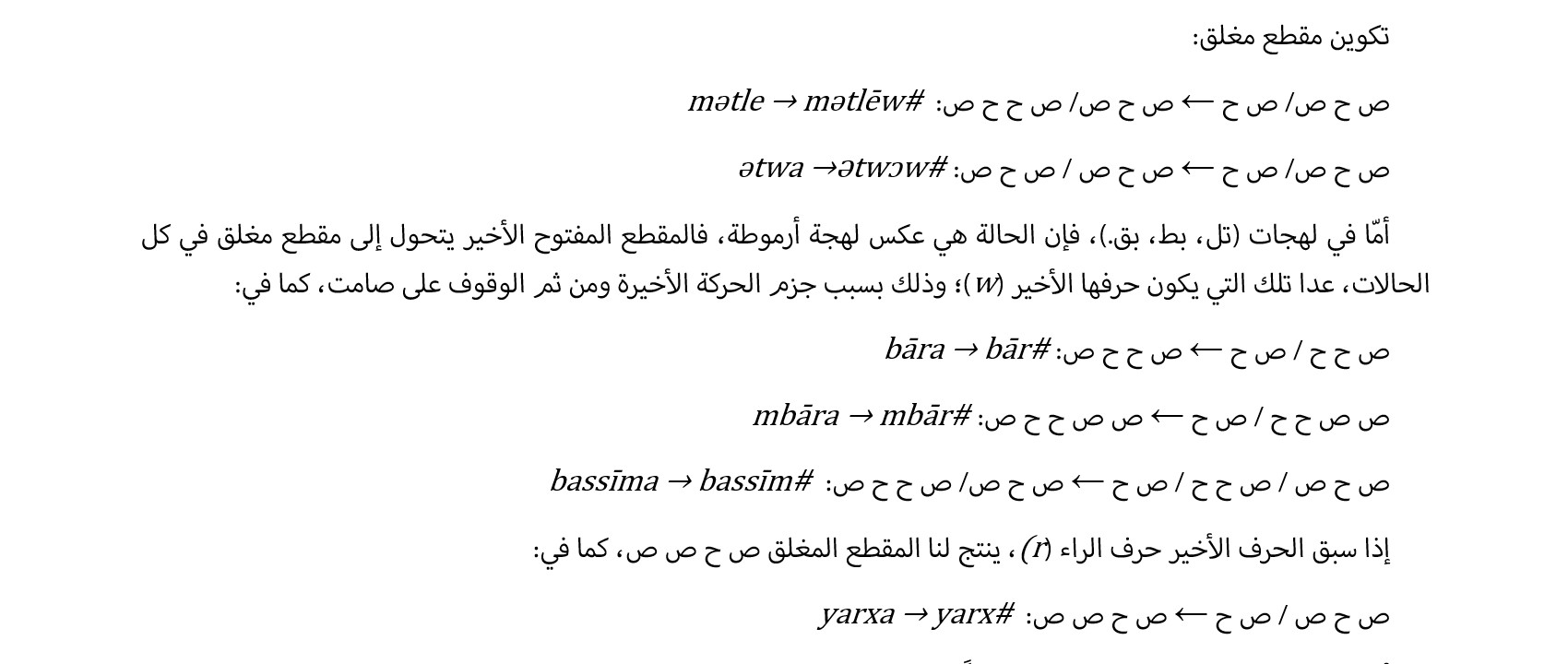The Pausal Form in Neo-Aramaic Dialects
DOI:
https://doi.org/10.21271/zjhs.27.s6.1Abstract
The research deals with the “Pausal Form” in the Neo-Aramaic dialects (Sureth), specifically in three dialects: Tellsqof, Batnaya, and Beqofa. The reason why these dialects are chosen is, firstly, these dialects indeed have this form, and secondly, the research might be the reason for further study to consider the possibility of having the “Pausal Form” in other Aramaic dialects, after the form was already discovered firstly in Armota dialect.
This phenomenon is one of the linguistic phenomena that affects one language or dialect or another. It often affects word endings. The importance of this research lies in discovering this linguistic phenomenon in the Neo-Aramaic dialects. The dominant view was that the pausal form is absent in dialects, and attempts on such studies were, to some extent, halted on this belief. The present research tries, through a group of modern audio recordings of these dialects which the researcher recorded in the year 2022, re-studying this phenomenon carefully in order to prove the existence of the such a form, and this is what the research aspires to.
Furthermore, the absence of discussion on the pausal form until this present research made the reliance in this study primarily on foreign sources, especially Arabic, in terms of defining the form and what relates to the limits of phonetic changes or the influential elements affected by the pausal phenomenon. But the it is beginning to become clearer little by little, through the presence of this raw material that is in our hands today and the study of new audio recordings. Such a study can be the first step in gaining a useful information that will be reliable material in future of linguistic studies. Moreover, it will be useful in discussing the types of pausal porm, its features and forms, and the most important elements that influence and affect this phenomenon, thus giving a special definition that suits Neo-Aramaic dialects (Sureth)
References
- اعقيلان، د. عبدالكريم عبدالقادر. 2022. الوقف في اللغات السامية دراسة مقارنة بين العربية والعبرية والسريانية. مجلة الجامعة الإسلامية للدراسات الإنسانية. المجلد/ 30. العدد 2.
- الأنباري، كمال الدين أبي البركات. 1999. أسرار العربية. الطبعة الأولى. لبنان.
- عبد التواب، رمضان. 1985. المدخل إلى علم اللغة ومناهج البحث اللغوي. مكتبة الخانجي/ القاهرة. الطبعة 2.
المصادر والمراجع الأجنبية
- Arnold, Werner. 2010. “Pausalformen in den arabischen Dialekten Antiochiens”. In: Arabische Welt: Grammatik, Dichtung und Dialekte. Beiträge einer Tagung in Erlangen zu Ehren von Wolfdietrich Fischer, hrsgg, v. Talay Shabo und Bobzin, Hartmut, Wiesbaden.
- Askar, Kawther. 2020. Der neuaramäische Dialekt von ʾAṛmoṭa. Untersuchung zur Phonologie und Morphologie (Doktorarbeit. Heidelberg Universität. Deutschland). (https://archiv.ub.uni-heidelberg.de/volltextserver/29358/).
- Jastrow, Otto. 1988. (Der neuaramäische Dialekt von Hertevin ) (Provinz Siirt). Harrassowitz - Wiesbaden.
- Khan, Jeoffrey. 2002. The neo- Aramaic Dialect of Qaraqosh. Leiden • boston. And: HdO. The Neo-Aramaic Dialect of Barwar. 2008. Leiden • boston.
- Sinha, Jasmin. 2000. Der neuostaramäische Dialekt von Bēṣpən (Provinz Mardin, Südosttürkei). Harrassowitz – Wiesbaden.
- Talay, Shabo. 2008. (Die neuaramäischen Dialekte. der Khabur-Assyrer in Nordostsyrien).Harrassowitz Verlag· Wiesbaden.

Downloads
Published
Issue
Section
License
Copyright (c) 2023 Kawther Najeeb Abdulahad Askar

This work is licensed under a Creative Commons Attribution 4.0 International License.









